<< Contents Page | << Chapter 3 | Leaves (forms)
Chapter 3. Plant Cells and Tissues
Leaves (forms)
Leaf Shapes, Margins, Apices, and Bases
Simple, Angiosperm Leaves
This page presents the terminology used to describe the shapes and forms of leaves. The following examples are all simple leaves. All are from flowering plants (angiosperms). Descriptive terms are given for the lamina shape (that is, its overall shape in outline), the lamina margin, the form or shape of both the apex (tip) and the base (lamina junction with petiole) of the leaf, and (in some cases) other qualities evident in the example picture presented.
 1. Chamaesyce celastroides (EUPHORBIACEAE)
SHAPE: oblong to elliptic |
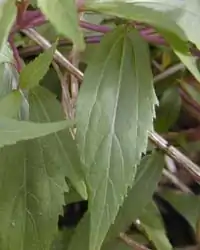 3. Ageratina riparia (ASTERACEAE)
SHAPE: rhombic |
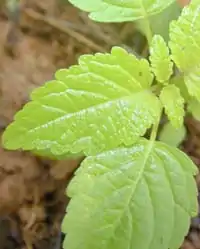 2. indet. (?LAMIACEAE)
SHAPE: ovate |
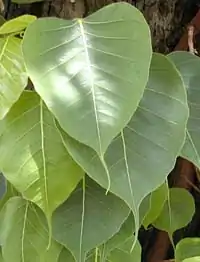 4. Ficus religiosa (MORACEAE)
SHAPE: cordate |
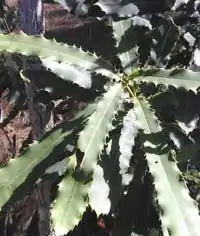 Macadamia sp. (PROTEACEAE) 5. Macadamia nut |
 Richardia brasiliensis (RUBIACEAE) SHAPE: |
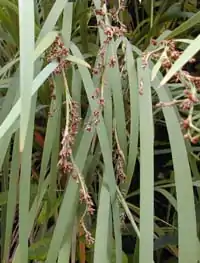 (CYPERACEAE) SHAPE: linear |
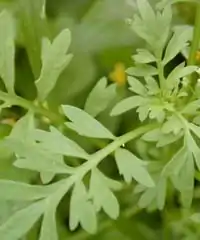 Coronopus didymus (BRASSICACEAE) SHAPE: oblong in outline, deeply pinnatifid |
 Ammania auriculata (LYTHRACEAE) SHAPE: linear |
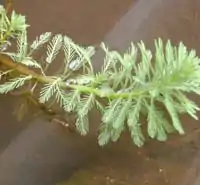 Myriophyllum aquaticum (HALORAGACEAE) SHAPE: pinnatifid, segments capillary |
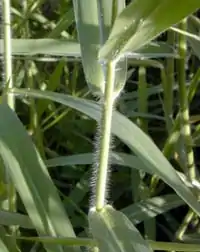 Brachiaria mutica (POACEAE) SHAPE: linear |
Compound, Angiosperm Leaves
These examples are all compound leaves. In these leaves, it is not always very instructive to describe the "leaf outline" and better to describe the number (or range) of leaflets. If the number is odd, there will be an unpaired leaflet at the tip. The shape terminology can be applied to the individual leaflets.
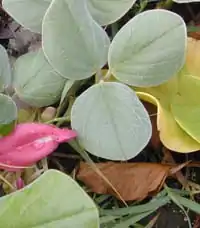 Canavalia sericea (FABACEAE) Silky jackbean |
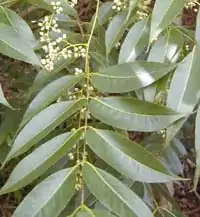 Toona ciliata (MELIACEAE) Australian redcedar |